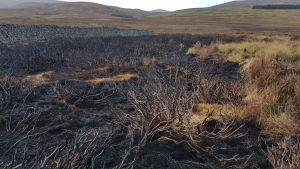Peatlands are impacted by and impact on a wide range of people and their interests. These include:
- Local people who live near or manage the land.
- Households and businesses in towns and cities downstream, that depend on clean drinking water that comes from often remote peatlands (e.g. Liverpool receives water from Lake Vyrnwy in North Wales).
- Wider communities of interest, such as those who use peatlands for recreation and enjoy their cultural and natural heritage.
Restoring peatlands is a good example of employing an ecosystem approach aligning conservation goals and sustainable development in line with the principles of the Convention of Biological Diversity. The IUCN Commission on Ecosystem Management suggests five key steps towards an Ecosystem Approach (Shepherd, 2008):
- Determining stakeholders and defining the ecosystem area
- Ecosystem structure, function & management
- Economic Issues
- Adaptive Management over space
- Adaptive Management over time
The case studies in ‘UK Peatland Restoration – Demonstrating Success’ showcase the application of these steps in practice.
‘Global Peatland Restoration – Demonstrating Success’ explores some of the examples of peatland restoration under different circumstances around the World in order to present an overview of the variety of benefits and inspiring ways in which peatland restoration can be delivered, and so avoid serious and costly consequences for society.











